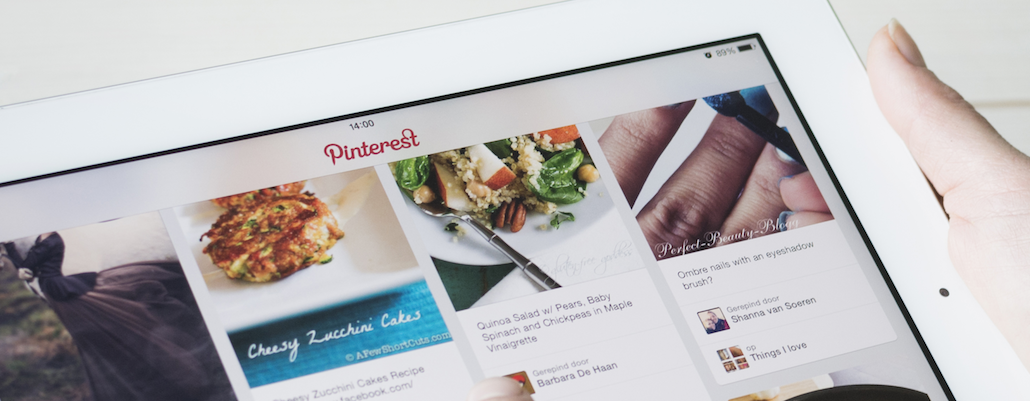
Brands are poised to pour big money into Pinterest, which could pose a challenge to rivals like Twitter, according to some ad world insiders. The photo-bookmarking platform is getting ready for this influx of ad dollars by working with agencies, brands and marketing partners on the tools they demand before they invest fully.
There are still some basic adjustments Pinterest is preparing to make to satisfy brands creatively and technologically, according to Kevin Knight, Pinterest’s head of creative and brand strategy.
“Since we’re building a lot of this from scratch, we look for people with really good insights into what we should build,” Knight said. “Agencies, brands and tech partners are calling out to us saying this is the next wave of stuff we need from you guys.”
Among Pinterest’s priorities are measurement and targeting, Knight said. These would give advertisers greater ability to reach specific audiences and track how well their campaigns perform, down to whether they drove sales in stores.
“The conversation never takes long to get to places like targeting,” Knight said of his meetings with advertisers.
Knight is Pinterest’s main liaison to brands and agencies. He was the point person when the company launched its first Promoted Pins, developed marketing technology partnerships, introduced shopping and Cinematic Pins that move — all of which has been met with mixed to positive feedback.
In a report yesterday, eMarketer graded the social media companies and their ad teams. Pinterest got a B for effectiveness but a C+ for limited technology. The technology complaint has been echoed by a number of big ad buyers as they try to put Pinterest’s potential into perspective.
“I keep hearing about how great Pinterest is,” said one top digital media buyer. “But I can’t spend a billion dollars there yet.”
Even if buyers could spend that much, there is still reluctance to dive in fully until the platform gets some of the basic ad measures that are found elsewhere. But Pinterest is constructing its ad infrastructure slowly, because it has no ready-made ad platform like the one Instagram inherited from parent company Facebook: Instagram was able to borrow Facebook’s targeting tech when it decided to turn up the ad volume earlier this year.
For its part, Pinterest is pacing itself to keep from turning off users with too much marketing, sources said.
“Pinterest knows that if they get that consumer piece wrong it has a potentially much more negative effect than if Instagram got it wrong,” said one marketing partner speaking on the condition of anonymity. “Because Instagram is backed by a much larger organization.”
Pinterest works with a few tech companies that help brands plan and execute campaigns through its ad software. These ad partners, like Adaptly, Ampush, SocialFlow and 4C, help drive ad sales by letting brands buy on Pinterest using the same tools they already use to plan campaigns on rival social media sites.
Pinterest is expanding these tech partnerships and developing the functionality offered through the ad software program. Sources have said it will have a deal soon with Datalogix, for instance, which is one of the top data companies doing measurement and targeting.
One agency executive said that soon Pinterest campaigns would have advanced targeting tools. “Sequential is coming,” the agency source said. Pinterest is developing this “sequential” targeting so that brands can fire different kinds of creative — Cinematic, Buyable or plain old Promoted Pins — depending on where the consumer sits on the path to making a purchase.
There are signs that brands are lining up to promote on Pinterest once the technology is more open. Last week, TechCrunch reported that investor documents showed the company could go from $170 million in revenue this year to $2.8 billion in 2018.
Pinterest is seen as a strong alternative to search advertising, as its 100 million users go there to product hunt and post aspirational photos of dream home renovations or summer vacations. In that way, it can be seen as a digital future board where people plaster their immediate- to long-term shopping plans.
“Next year, Pinterest has a shot at overtaking Twitter as the second-most important social ad platform after Facebook,” said David Berkowitz, CMO at agency MRY. “Pinterest is the most overtly commercial of any major digital media property.”
More in Media

Podcast companies turn to live events to capture growing advertiser spend
The surge in the number of live podcast events in 2025 reflects a broader shift: advertisers are betting bigger on podcasts — not just as an audio channel but as a full-fledged creator economy play.

Media Briefing: ‘Cloudflare is locking the door’: Publishers celebrate victory against AI bot crawlers
After years of miserably watching their content get ransacked for free by millions of unidentified AI bot crawlers, publishers were finally thrown a viable lifeline.

How Vogue could navigate potential industry headwinds as Anna Wintour — who agency execs say made ad dollars flow — brings on new edit lead
Anna Wintour’s successor at Vogue will have to overcome the myriad of challenges facing fashion media and the digital publishing ecosystem.





